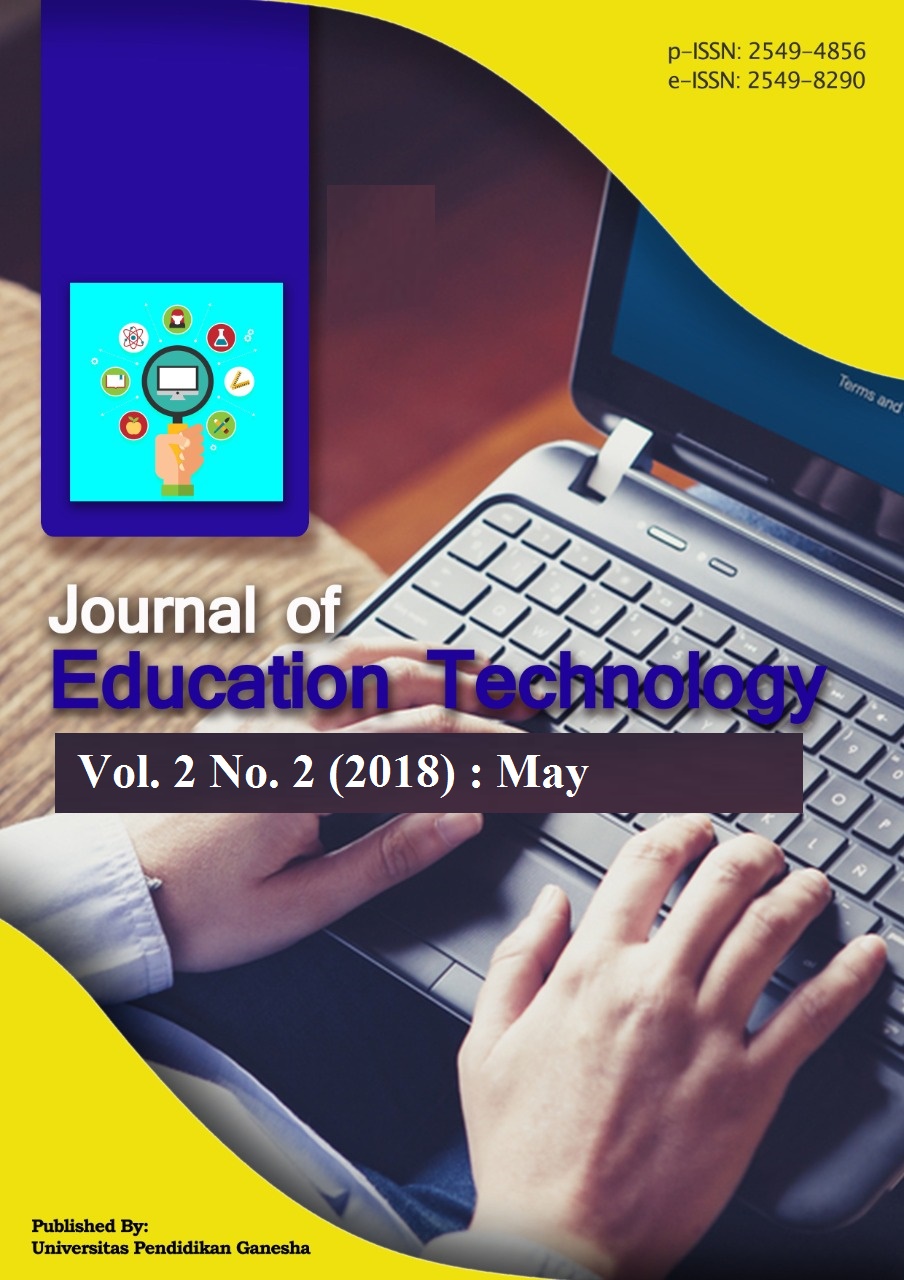The Development of Transformation Geometry Learning Medium with Scientific Approach As Effort to Improve the Understanding Concept Skill
DOI:
https://doi.org/10.23887/jet.v2i2.16185Keywords:
learning medium, transformation geometry, 4-DAbstract
"> The development research aims to describe: (1) storyboard; (2) the implementation results; and (3) the usability of thetransformation geometry learning medium with scientific approach. The development uses 4-D model which consisting of
define, design, develop, and disseminate, but this research is only up to the develop step. The results showed that the
transformation geometry learning medium with scientific approach can be accepted as a learning medium with very valid
category, which seen from the validity score is 4.37. Learning medium developed got excellent response with the average
score of practicability is 4.5. This learning medium also has a high effectiveness in learning process with the level of student
activity reached the average score around 4.2, and the classical completeness is 80%. Based on the result of the research, it’s
expected that the transformation geometry learning medium with scientific approach can be used in learning process.
References
Arikunto, S. 2012. Dasar-Dasar Evaluasi Pendidikan Edisi 2. Jakarta: PT Bumi Aksara.
Arjawa, A. A GD Putra. 2017. Pengembangan Multimedium Pembelajaran Materi Garis dan Sudut Untuk SMP
Kelas VII. Essay (unpublished). Jurusan Pendidikan Matematika, Undiksha Singaraja.
Aunurrahman. 2012. Belajar dan Pembelajar. Bandung: Alfabeta.
Musfiqon. 2012. Pengembangan Medium & Sumber Pembelajaran. Jakarta: Prestasi Pustaka.
NCTM. 2000. Mathematics Assesment a Practical Handbook for Grades 6-8. United States of America: NCTM.
Nieveen, Nienke dan J. van den Akker. 1999. Design Approaches and Tools in Education and Training. Dordrecht:
Kluwer Academic Publishers.
Paradesa, R. 2016. “Pengembangan Bahan Ajar Geometri Transformasi Berbasis Visual”. Jurnal Pendidikan
Matematika RAFA, Volume 02, Nomor 01, ISSN: 2460 – 8718.
Putri, Ni Wayan Karmila. 2015. Pengembangan Medium Pembelajaran Transformasi Berbasis Geogebra. Essay
(unpublished). Jurusan Pendidikan Matematika, Undiksha Singaraja.
Thiagarajan, Semmel, dkk. 1974. Instructional Development for Training Teacher of Exceptional Children.
Minesota: Indiana University.
Yuberti. 2014. “Penelitian dan Pengembangan yang Belum Diminati dan Perspektifnya”. Jurnal Ilmiah
Pendidikan Fisika ‘Al – Biruni, Volume 03, Nomor 02, ISSN: 2303 – 1832.
Downloads
Published
How to Cite
Issue
Section
License
Authors who publish with the Journal of Education Technology agree to the following terms:
- Authors retain copyright and grant the journal the right of first publication with the work simultaneously licensed under a Creative Commons Attribution License (CC BY-SA 4.0) that allows others to share the work with an acknowledgment of the work's authorship and initial publication in this journal.
- Authors are able to enter into separate, additional contractual arrangements for the non-exclusive distribution of the journal's published version of the work (e.g., post it to an institutional repository or publish it in a book), with an acknowledgment of its initial publication in this journal.
- Authors are permitted and encouraged to post their work online (e.g., in institutional repositories or on their website) prior to and during the submission process, as it can lead to productive exchanges, as well as earlier and greater citation of published work. (See The Effect of Open Access)
















